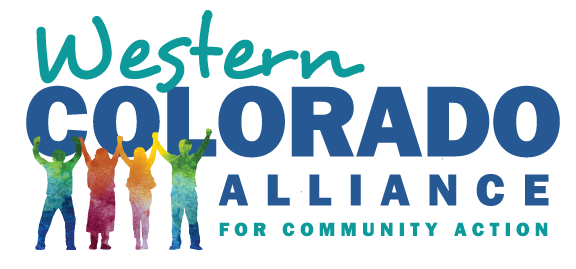- An Alliance For Community Action
- (970) 256-7650
- info@WesternColoradoAlliance.org
Oil & gas proposals headed to rule-making
Oil & gas proposals headed to rule-making
by Emily Hornback, WCC Organizer

Dave Devanney, chairperson of Battlement Concerned Citizens, speaks to rally of impacted citizens at January Task Force meeting in Greeley.
Bob Arrington called it. Writing in the Spring edition of WCC’s newsletter, the Clarion, he predicted that meaningful reform was unlikely to come out of Gov. John Hickenlooper’s Oil and Gas Task Force, which was charged with reducing conflicts between oil and gas development and communities in Colorado.
Sure enough, the results of the panel’s six-month-long deliberations are a rather weak slate of recommendations. That said, one of them at least holds some promise – it would give communities more say in the location of large-scale industrial sites near neighborhoods – and WCC and allied organizations will be working to preserve the provision as it works its way through a Colorado Oil and Gas Conservation Commission (COGCC) rulemaking process later this year.
“If the Task Force process did anything, it has energized like-minded people and organizations across the state to realize they have common objectives,” noted Leslie Robinson, chair of the Grand Valley Citizens Alliance, WCC’s Garfield County chapter. “From Rifle to Greeley, we have strengthened our resolve to work collectively with the governor and the Colorado Oil and Gas Commission for comprehensive, statewide regulations that will better protect our families, communities, and water resources.”
What is less clear is whether any organizations in the state will make another attempt to put these issues on the 2016 ballot. Gov. Hickenlooper formed the Task Force to head off a messy battle of oil and gas ballot initiatives in the last election, and the panel spent six months conducting hearings around the state and hashing out its recommendations, but community concerns continue to simmer.
After the Task Force released its final report in February, a newly formed organization, Coloradans Against Fracking, announced that it would seek to put a state fracking ban before the voters, although it laterbacked away from that position.
A statewide ban on fracking would appear to be politically unrealistic, and its chances have gotten slimmer since the passage of House Bill 1057 in the recent state legislative session. The new law makes it harder to get voter-initiated issues on the state ballot, almost as if it had been designed to thwart future attempts to rein in oil and gas development through the initiative process.
The Governor’s Task Force wasn’t designed to produce major change. Since a two-thirds “supermajority” was required to approve any recommendation, and six of the panel’s 21 members had direct ties to the oil and gas industry, only nine out of dozens of proposals gained the necessary support from industry representatives.
The Outcome
The nine approved recommendations include:
- adding more inspectors to the state agency that oversees oil and gas operations in Colorado;
- increasing state funding for staff and equipment to monitor air quality in and around oil and gas operations;
- reducing truck traffic at industry sites;
- establishing an industry compliance program; and
- creating an “oil and gas information clearinghouse” website.
Proposals that received a simple majority were also passed on to the Governor in a minority report, but there is no directive to either the executive branch or lawmakers to act on them. These meatier recommendations include:
- required disclosure of fracking chemicals;
- giving adjacent landowners legal standing in the permitting process; and
- a directive to the Department of Public Health and Environment to evaluate if drilling and fracking pose a threat to public health.
Increasing setbacks from homes – one of the issues that led to the creation of the Task Force – didn’t gain enough support even to make it into the minority report.
Dave Devanney, chair of the Battlement Concerned Citizens, whose members live in a rural residential area in western Garfield County surrounded by oil and gas development, felt that the inability of the Task Force to address this fundamental issue was a failure.
“The governor should respect the testimony of everyday citizens across the state who are concerned about the impacts of oil and gas development when an industrialized drilling and multi-well production site is located near their homes,” he said. “Regardless of the final vote, it is clear that a majority of Coloradans support increased oil and gas regulations to protect their homes, health and quality of life.”
After working for our Alliance for 32 years, Brenda retired in 2018 and took a two-year hiatus before rejoining the fold as a board member. She is a treasure trove of little known facts about the organization after managing everything from the membership database to our communications. Her other interests include dabbling in a number of artforms, hiking, botany (her college major), t'ai chi and chi gung, and swing dancing. With roots in western Washington state, she has lived in Montrose with her husband Kevin since 1984.

